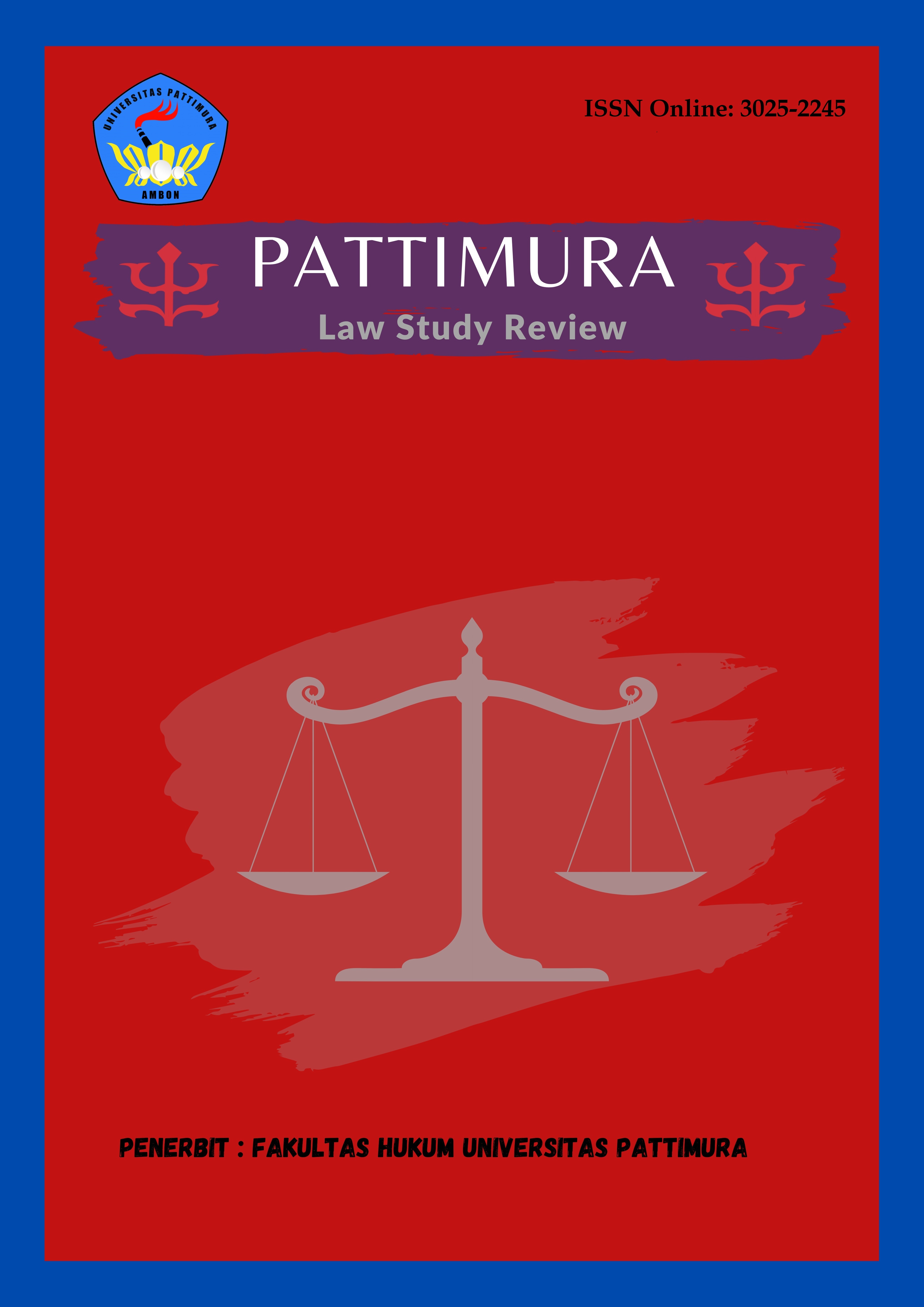Kriminologis Tindak Pidana Penyalahgunaan Narkotika Anak
Abstract
This study aims to realize the criminological review of drug abuse crimes committed by children in Ambon City by analyzing the events that caused the occurrence of drug abuse crimes by children in Ambon City and the efforts made by Polresta P. Ambon and P. P. Lease in overcoming and following up on the occurrence of drug abuse crimes by children in Ambon City. This study is an empirical legal study with descriptive analysis. The data for this study were obtained from primary data and secondary data. Based on the results of the study and discussion, it can be concluded that there are several factors that influence drug abuse in Ambon: personal factors, education, family, economy, and environment. Among the five factors, family factors are known to be the most influential factor in drug abuse in Ambon City. In addition, children need special attention from environmental aspects related to their relationships with their peers and the people around them. This effort requires the role of parents to supervise and protect their children so that they do not fall into the influence of friends who invite them to try narcotics for the first time by giving them for free, after the victim is addicted, the drugs will be sold to the child because they are already addicted. Meanwhile, efforts made by the P. Ambon and P. P. Lease Police in dealing with drug abuse by children are carried out in several ways, namely by providing guidance, advice and education about the dangers of drug abuse through e-brochures, posters and infographics and working together with all authorities, the community, religious leaders and the local government to help combat drugs in Ambon City.
Downloads
References
Buku
Anang Priyanto, Kriminologi, Yogyakarta: Ombak, 2012.
A.S. Alam, Pengantar Kriminologi, Makassar: Refleksi Art, 2010.
Barda Nawawi Arif, Kebijakan Legislatif dalam Penanggulangan Kejahatan dengan Pidana Penjara, Yogyakarta: Genta Publising, 2010.
Bosu, Sendi-Sendi Kriminologi, Surabaya: Usaha Nasional. 1982.
Bunadi Hidayat, Pemidanaan Anak di Bawah Umur, Bandung: Alumni, 2010.
Dadang Hawai. Penyalahgunaan dan Ketergantungan NAPZA, Jakarta: FKUI, 2003.
Eddy O. S. Hiariej, Prinsip-Prinsip Hukum Pidana, Yogyakarta: Cahaya Atma Pustaka, 2015.
Husein Alatas, dkk, Penanggulangan Korban Narkoba. Jakarta: FKUI, 2003.
Lisa Sendi-Sendi Kriminologi, Narkotika, Psikotropika dan Gangguan Jiwa, Yogyakarta: Nuha Medika, 2013.
Makaro Taufik, Tindak Pidana Narkotika, Bogor: Ghalia Indonesia, 2005.
Mardani, Penyalahgunaan Narkoba dalam perspektif Hukum Islam dan Hukum Pidana Nasional, Jakarta: Raja Grafindo, 2008.
Muhammad Mustofa, Metode Penelitian Kriminologi Jakarta: Kencana Prenada Group, 2013.
Supramono, Hukum Narkotika Indonesia, Jakarta: Djambatan, 2001.
olib Efendi, Dasar-Dasar Kriminologi, Ilmu Tentang Sebab-Sebab Kejahatan, Malang: Setara Press, 2017.
Topo Santoso dan Eva Achjani Zulfa, Kriminologi, Jakarta: Raja Gravindo Persada, 2001.
Jurnal
Teng Berlianty, “Penguatan Eksistensi Bahasa Tana Dalam Upaya Perlindungan Hukum
Bahasa Daerah Sebagai Budaya Bangsa,” Kertha Patrika 40, no. 2 (2018): 99–111,
Copyright (c) 2025 Muhammad Satrio Sujud, Juanrico Alfaromona Sumarezs Titahelu, Judy Marria Saimima (Author)

This work is licensed under a Creative Commons Attribution-NonCommercial 4.0 International License.
Authors who publish their manuscripts in this Journal agree to the following conditions:
- The copyright in each article belongs to the author, as well as the right to patent.
- Authors are able to enter into separate, additional contractual arrangements for the non-exclusive distribution of the journal's published version of the work (e.g., post it to an institutional repository or publish it in a book), with an acknowledgment of its initial publication in this journal.
- Authors are permitted and encouraged to post their work online (e.g., in institutional repositories or on their website) prior to and during the submission process, as it can lead to productive exchanges, as well as earlier and greater citation of published work.
- Authors have the right to self-archiving of the article (Author Self-Archiving Policy)













